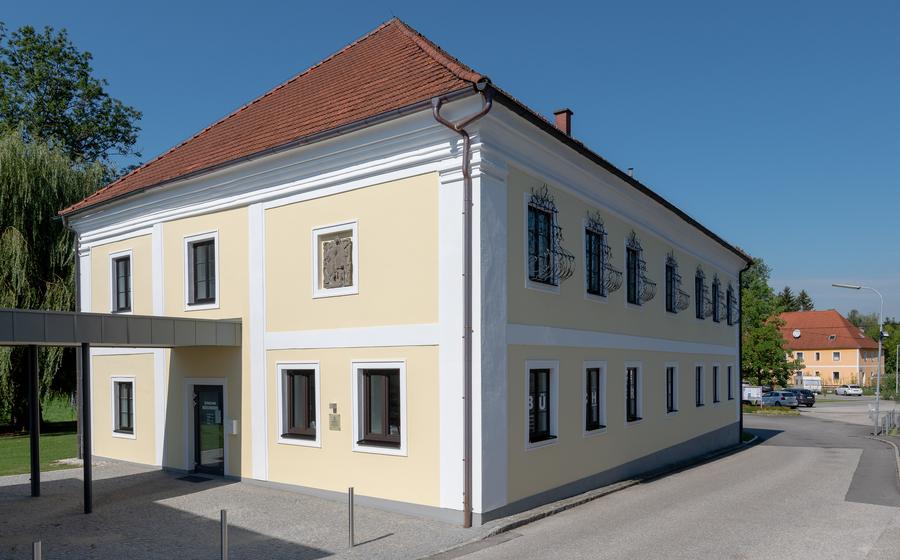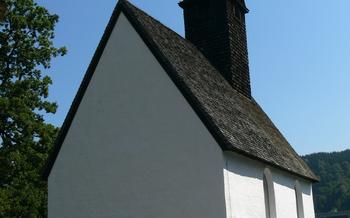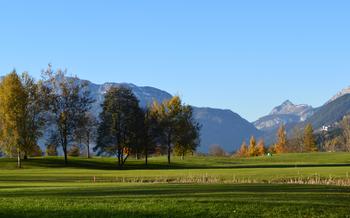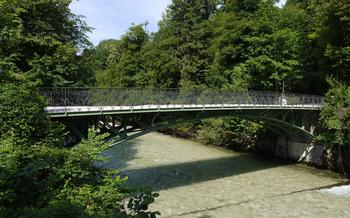
Dachstein Ice Caves
- Exploring the Dachstein Ice Caves
- Location and Accessibility
- Ticket Prices and Reservations
- Guided Tours and Languages
- The Ice Palace and Its Wonders
- The Mammoth Cave and Its Secrets
- The Wind Cave and Its Mysteries
- The History of the Caves and Their Exploration
- The Dachstein Plateau and Its Surroundings
- Tips for a Memorable Visit
- Nearby Accommodation and Dining Options
- Planning a Multi-Day Trip
- Unique Experiences and Events
- Insider Tip: Unveiling the Caves' Hidden Charms in Solitude
Exploring the Dachstein Ice Caves
The Dachstein Ice Caves, a natural wonder nestled in the heart of the Dachstein Massif, offer an awe-inspiring journey into a subterranean realm of ice and wonder. Discovered in 1890 by local explorer Anton von Posselt, these caves have captivated visitors with their unique geological formations, stunning ice sculptures, and a fascinating history.
Guided tours are available, led by experienced guides who ensure the safety of visitors while providing insights into the caves' geology, history, and legends. Visitors are equipped with helmets and flashlights to navigate the icy passages safely. The tours typically last for about an hour and require sturdy footwear and warm clothing, as the temperature inside the caves remains a constant 0 degrees Celsius.
Location and Accessibility
The Dachstein Ice Caves are conveniently located in the heart of the Dachstein Massif, a stunning Alpine region in Austria. Their proximity to major cities like Salzburg (60 kilometers away) and Linz (100 kilometers away) makes them an ideal day trip or weekend getaway. Whether you choose to drive or take public transportation, reaching the caves is a breeze.
If you're driving, simply follow the well-marked signs from the nearest highway exit. Ample parking spaces are available near the cave entrance, ensuring a hassle-free start to your adventure. For those opting for public transportation, regular buses run from nearby towns and cities, making it easy to connect to the caves.
Ticket Prices and Reservations
The Dachstein Ice Caves offer a range of ticket options to suit different budgets and group sizes. Regular admission tickets for adults start at a reasonable price, while children and families can enjoy discounted rates. To avoid disappointment during peak season, advance reservations are highly recommended, especially for groups and families. Online booking is convenient and allows you to secure your spot in the guided tours. Last-minute availability may be limited, so planning ahead is always advisable. Additionally, keep an eye out for special offers and discounts, which can provide further savings for budget-conscious travelers.
Guided Tours and Languages
The Dachstein Ice Caves offer guided tours in multiple languages, ensuring that visitors from all over the world can explore the wonders of the caves. These tours are led by experienced guides who are knowledgeable about the history, geology, and legends associated with the caves. The guides provide fascinating insights into the formation of the ice caves, the unique ice sculptures, and the scientific discoveries made within them. Guided tours typically last for about an hour and cover the highlights of the caves, including the Ice Palace, the Mammoth Cave, and the Giant Ice Cave. The guides are also trained to assist visitors with any questions or concerns they may have during the tour. For individuals with disabilities, the caves are wheelchair accessible, allowing them to enjoy the tour comfortably.
The Ice Palace and Its Wonders
The Dachstein Ice Caves are home to the largest ice cave in the world, known as the Ice Palace. This awe-inspiring chamber stretches over 42 kilometers and boasts a height of 110 meters, making it a truly majestic sight to behold. The Ice Palace is adorned with stunning ice formations, including stalactites and stalagmites that shimmer and sparkle under the lights. Visitors are treated to breathtaking views as they traverse through the cave, with ample opportunities to capture the beauty of this natural wonder through photography. The Ice Palace is also steeped in history and legend, with tales of mythical creatures and hidden treasures adding to its allure.
The Mammoth Cave and Its Secrets
The Mammoth Cave, the second-largest ice cave in the world, captivates visitors with its unique ice sculptures, tunnels, and chambers. This awe-inspiring cave boasts a labyrinth of intricate ice formations, each one a testament to nature's artistic prowess.
As you venture deeper into the Mammoth Cave, you'll discover hidden chambers and secret passages, each revealing its own unique treasures. The ice sculptures, shaped by centuries of water dripping and freezing, take on various forms, from delicate chandeliers to towering columns. The walls themselves are adorned with intricate patterns and textures, creating a mesmerizing visual spectacle.
In addition to its stunning ice formations, the Mammoth Cave has also yielded significant scientific discoveries. Ancient artifacts and fossils have been unearthed within its depths, providing valuable insights into the region's history and prehistoric life. The cave has thus become an important site for scientific research, shedding light on the geological and biological processes that have shaped this subterranean wonderland.
The Wind Cave and Its Mysteries
Among the Dachstein Ice Caves, the Wind Cave stands out for its unique and intriguing characteristics. This cave system is renowned for its strong and mysterious winds, which have captivated the curiosity of explorers and scientists alike. The science behind this phenomenon lies in the cave's complex network of tunnels and chambers, which create a natural wind tunnel effect. As air moves through these passages, it accelerates, resulting in the strong winds that give the cave its name.
The wind in the Wind Cave has played a significant role in shaping the ice formations within. The constant flow of air has resulted in the creation of unique ice sculptures and features that are not found in other caves. These formations, combined with the eerie and mystical atmosphere created by the wind, make the Wind Cave a truly unforgettable experience for visitors.
Exploring the Wind Cave is an adventure that requires caution and respect for the elements. The strong winds can be unpredictable, and visitors should be prepared for a challenging and exhilarating experience. Guided tours are available, led by experienced guides who can provide insights into the cave's geology, history, and the science behind the wind phenomenon.
The History of the Caves and Their Exploration
The Dachstein Ice Caves have a rich and fascinating history, with early discoveries dating back to the 16th century. Local explorers and mountaineers played a crucial role in uncovering the secrets of these subterranean wonders. In the 19th century, scientific expeditions were conducted to map the caves and study their geological formations. These expeditions led to a deeper understanding of the caves' unique features, including their ice sculptures, tunnels, and chambers.
As tourism developed in the region, the Dachstein Ice Caves became a popular destination for visitors from around the world. The caves were gradually equipped with infrastructure to facilitate safe and accessible tours. Over the years, ongoing research and conservation efforts have been undertaken to protect the delicate ecosystem of the caves and preserve their natural beauty for future generations.
The Dachstein Plateau and Its Surroundings
The Dachstein Ice Caves are nestled amidst the breathtaking Alpine landscape of the Dachstein Plateau, offering visitors a chance to explore not only the subterranean wonders of the caves but also the stunning natural beauty of the surrounding area. The plateau is a haven for outdoor enthusiasts, with a vast network of hiking trails that wind through lush meadows, dense forests, and past sparkling lakes. In the winter months, the region transforms into a winter wonderland, providing opportunities for skiing, snowboarding, and cross-country skiing.
Beyond the caves, the Dachstein Plateau is dotted with charming villages and towns, each with its own unique character and history. Hallstatt, a UNESCO World Heritage Site, is a picturesque village perched on the shores of Lake Hallstatt, offering stunning views of the surrounding mountains. Werfen, another charming town in the region, is home to Hohenwerfen Castle, a medieval fortress that offers guided tours and breathtaking views of the surrounding landscape.
The Dachstein Glacier, located at the heart of the plateau, is another must-visit attraction. This vast ice field offers visitors the chance to witness the power and beauty of nature firsthand, with opportunities for glacier walks, ice climbing, and stunning views of the surrounding peaks.
Whether you're an avid hiker, a winter sports enthusiast, or simply seeking a breathtaking natural escape, the Dachstein Plateau has something to offer everyone. Its stunning Alpine scenery, combined with the unique experience of exploring the Dachstein Ice Caves, makes it a must-visit destination for anyone traveling to Austria.
Tips for a Memorable Visit
To ensure a memorable and enjoyable visit to the Dachstein Ice Caves, it's essential to come prepared and follow a few practical tips:
-
Dress Appropriately: The caves are cold and damp, so dress in warm layers. Wear comfortable, sturdy shoes with good traction, as the ground can be slippery. Gloves and a hat are also recommended.
-
Capture the Scenery: Don't forget your camera to capture the stunning ice formations and the breathtaking views inside the caves. The unique lighting conditions create a magical ambiance, perfect for capturing memorable shots.
-
Pack Essentials: Bring a small backpack with snacks and water to keep yourself energized during the tour. It's also a good idea to have a small flashlight or headlamp handy, just in case.
-
Respect and Safety: Remember that the caves are a natural wonder and should be treated with respect. Follow the guidelines provided by the guides and stay on designated paths to avoid disturbing the delicate ice formations.
Nearby Accommodation and Dining Options
To complement your visit to the Dachstein Ice Caves, a range of accommodation and dining options awaits you in the surrounding area.
Planning a Multi-Day Trip
To truly immerse yourself in the beauty and wonders of the Dachstein Ice Caves and the surrounding region, consider planning a multi-day trip. This will allow you to explore the caves at a leisurely pace, while also experiencing other attractions and activities in the area.
When planning your itinerary, start by deciding how much time you want to spend in the region. If you have three days, you can comfortably visit the caves, go for a hike or two, and explore nearby towns and villages. If you have more time, you can venture further into the Dachstein Mountains, visit additional caves, or try your hand at winter sports such as skiing or snowboarding.
To make the most of your time, create a detailed itinerary that outlines your daily activities. Be sure to include buffer time for unexpected delays or changes in plans. It's also important to factor in travel time between destinations, especially if you're planning to explore multiple locations.
Budgeting is another important consideration when planning a multi-day trip. Accommodation, food, and transportation can add up quickly, so it's helpful to set a budget and stick to it. There are a variety of budget-friendly options available, such as hostels, guesthouses, and self-catering apartments. You can also save money by packing your own food and drinks, and taking advantage of public transportation or rental bicycles.
With careful planning and budgeting, you can easily create a memorable and enriching multi-day trip to the Dachstein Ice Caves and the surrounding region.
Unique Experiences and Events
The Dachstein Ice Caves and their surroundings offer a range of unique experiences and events that cater to diverse interests. During the summer months, visitors can participate in the Dachstein Giant Ice Cave Run, a thrilling running event held entirely on ice. This challenging race attracts participants from around the world who compete against the clock and the elements.
For those seeking a more immersive experience, ice climbing workshops are available, providing the opportunity to learn the basics of this exhilarating sport in a safe and controlled environment. Additionally, caving workshops offer an in-depth exploration of the caves, including hands-on activities and insights into the science and history of these natural wonders.
Throughout the year, various festivals and events are held in the region, showcasing local culture, traditions, and cuisine. These events provide an opportunity to connect with the community and experience the vibrant atmosphere of the Dachstein region. Whether it's a traditional folk festival, a culinary event, or a winter sports competition, there's something for everyone to enjoy.
Insider Tip: Unveiling the Caves' Hidden Charms in Solitude
For an experience like no other, consider visiting the Dachstein Ice Caves during the off-season. While the caves are open year-round, the summer months attract the largest crowds. Venturing into the ice caves during the quieter months, typically from November to April, offers a unique opportunity to immerse yourself in the tranquility and serenity of these natural wonders. With fewer visitors, you'll have the chance to fully appreciate the intricate ice formations, admire the stunning views, and connect with the caves' mystical ambiance without the hustle and bustle of peak season. Embrace the solitude, let the silence envelop you, and discover the hidden charms of the Dachstein Ice Caves in a truly intimate and unforgettable way.









